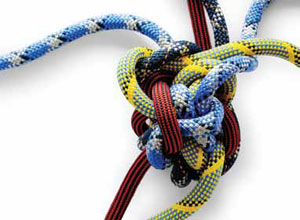For many years I was an advocate of simplicity when it came to user interface design, maybe to an extreme. Making interfaces simple is very hard work, but at the time my personal interest was fueled by the high number of bad, overly complicated interfaces that the audiovisual industry in general (myself included) had created for our customers.
In the past 10 years, the level of interface design appears to have improved significantly. This is partly because the AV world has begun to understand how to better match the technology we are providing with human perception and our cognitive abilities. There has also been a convergence toward some interface conventions (fueled in part by website uniformity) that has made many interface layouts more familiar to users and, as Mac inventor Jef Raskin was known to say, “intuitive equals familiar.”
Today I am more comfortable with the fact that some interfaces need to be complex. Complexity is completely appropriate for some users, such as people configuring and commissioning large sound systems. The real art of interface design is not only to simplify, but also to design an interface with an appropriate level of complexity. In Donald Norman’s latest book, Living with Complexity, he states, “Good design can help tame the complexity, not by making things less complex—for the complexity is required— but by managing the complexity.” He goes on to explain that the skills needed to manage complexity lie in making the product design understandable and properly appraising the abilities and skills of the people using the product.
Knowing your customer, or at least your customer “persona,” is at the root of choosing the appropriate level of complexity for an interface design. For complex systems, even with impeccable organization, you may still be asked to create an interface that is too complex for the user. This is a significant fork in the road for the designer, and one that I want to focus on because I think it is where designers often go wrong.
It’s common for customers to ask for more complexity than they can handle. It is very easy to ask for features in a system while unknowingly creating more complexity than either the user or the physical interface can handle. The complexity of the system should mandate the appropriate interface (touchscreen, on-screen display, hard button, dials and gauges, etc.). Many times the customer asks for features that literally overflow the touchpanel or wall plate that has been pre-chosen without consideration for the task at hand. Using complexity appropriately does not mean that the controls are hidden three layers down a hierarchical winding road! Complexity still requires elegance and great organization, and it often requires more physical real estate from an interface.
Training may also be required for a moderately to significantly complex system (such as a 72-channel digital audio console or large lighting console), but the other thing that often needs to go hand-in-hand with complex systems that require training is frequent use of those systems. You would not want to fly in a plane where the pilot only flies once every six months— it is not a good idea. Complex systems only become familiar and usable through repeated and frequent use. So, if a customer is asking for a complex system, make sure they have the time to stay familiar with the complexity you’re giving them.

It is up to you to advise when the customer goes down the wrong road toward more complexity than they have the skill and time to handle. Rapidly prototyping interfaces on paper or simple CAD tools are one of the best ways to run trials on what a customer is asking for— before hardware is purchased or even proposed. Ultimately the equipment chosen will then be driven by the customer’s need and by the simplicity, or complexity, of the required system.
Paul Chavez (pchavez@harman.com) is the director of systems applications for Harman Pro Group. He is a usability evangelist and a futurologist. Chavez has designed a variety of audiovisual systems ranging from themed attractions to super yachts. He has also taught and written on the topics of interaction design, audiovisual design, and networking.
Organize to Add Usability
The primary skill needed for making any system more understandable and usable is the ability to organize well. Most of the graphic design principles that apply to user controls are those that help to organize the content of a control panel: grid, grouping, using subtle or “just noticeable” differences in color, and determining what needs to be visible and what can be hidden. The use of the grid and grouping alone can help fix those panels you’ve seen with 10 or 20 floating buttons where each button looks equally important.
Using your organizational skills means pre-sorting for your user, e.g., determining what controls are related to each other and how to group multiple controls so that the most used and important controls have a slight “visual advantage” over other objects on the page. This involves asking what can be done make a control subtly “more important” than the others (and coloring it red is almost never the right answer). Some possibilities are changing the color saturation of the control just a little, sizing it slightly larger, or placing it in a more accessible location.
You don’t have to do very much, which is why cognitive scientists call this a “just noticeable difference.”
—P.C.
